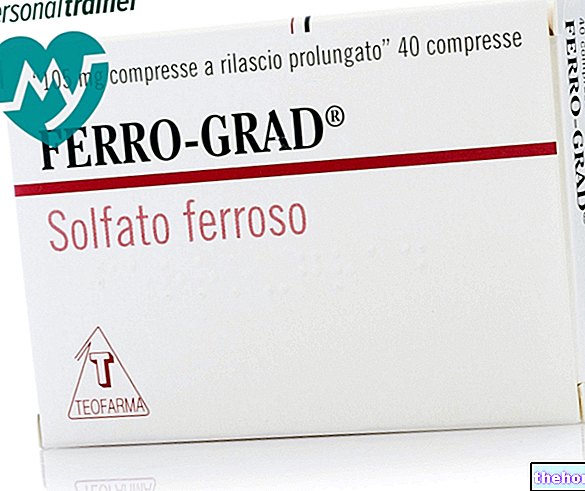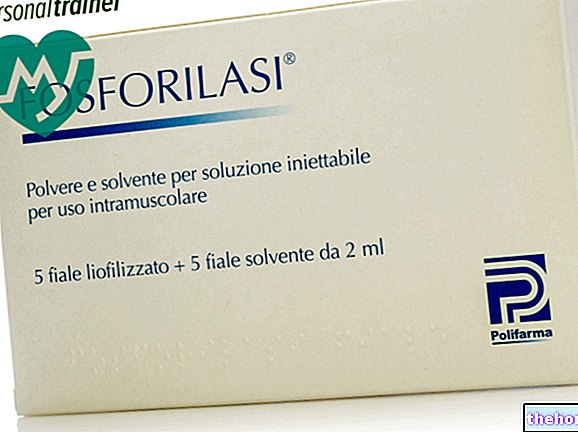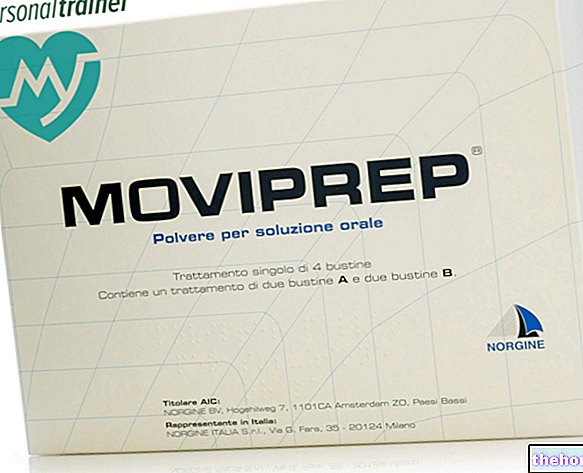Active ingredients: Dexamethasone
Luxazone 2 mg / ml eye drops, suspension
Luxazone 2 mg / g ophthalmic ointment
Why is Luxazone used? What is it for?
PHARMACOTHERAPEUTIC CATEGORY
Corticosteroids, not associated
THERAPEUTIC INDICATIONS
In the treatment of allergic, inflammatory and congestive diseases of the anterior segment of the eye and in particular in cases of choroiditis, acute and subacute iridocyclitis, corneal edema, allergic conjunctivitis, anterior uveitis in general.
Contraindications When Luxazone should not be used
- Hypersensitivity to the active substance or to any of the excipients listed in the "COMPOSITION" section.
- Intracular hypertension;
- Acute herpes simplex and most of the other corneal virus diseases in the acute ulcerative phase, except in association with specific chemotherapeutic agents for the herpetic virus, conjunctivitis with ulcerative keratitis also in the initial phase (positive fluorescein test);
- Tuberculosis of the eye;
- Mycosis of the eye;
- Acute purulent ophthalmias, purulent and herpetic conjunctivitis which can be masked or aggravated by corticosteroids;
- Sty.
Precautions for use What you need to know before taking Luxazone
Prolonged use of eye products that contain corticosteroids can give rise to adverse events (see paragraph "UNDESIRABLE EFFECTS"): uninterrupted application for more than 1 month is not recommended.
Increased intraocular pressure and glaucoma
Prolonged use of corticosteroids can increase intraocular pressure in sensitive individuals, resulting in glaucoma with optic nerve damage, visual acuity and visual field defects.
Steroids should be used with caution in the presence of glaucoma; intraocular pressure should be checked frequently.
Prolonged use can cause subcapsular posterior cataracts. During prolonged treatments it is advisable to carry out frequent checks of the ocular tone.
Untreated acute infection masking
An untreated "acute eye infection" may be masked or its activity enhanced by the presence of steroid drugs.
Secondary eye infections
Prolonged use of steroid drugs can suppress the immune response and thus increase the risk of secondary eye infections from pathogens released from the eye tissue.
Corneal fungal infections are particularly prone to develop in conjunction with prolonged steroid applications; therefore this possibility should be considered in any type of corneal ulcer where a steroid is in use or has been used. If appropriate, fungal cultures should be harvested.
The use of intraocular steroids can prolong the course and can exacerbate the severity of many viral infections of the eye (including herpes simplex). Steroid therapy in the treatment of stromal herpes simplex requires great care; frequent checking by means of the slit lamp is required.
In viral herpetic keratitis it is not recommended to use it, which may possibly be allowed under the strict supervision of the ophthalmologist, in particular as regards the possible immune implications of the infection.
Corneal and scleral thinning
In diseases that cause thinning of the cornea and sclera, perforation of the globe is known to occur.
Delayed healing and blistering
The use of steroids after cataract surgery can delay healing and increase the incidence of blistering.
Possibility of eye injury and contamination
To prevent eye injury or contamination, care should be taken to prevent the bottle or tube cap from touching the eye or any other surface. Using the bottle or tube by more than one person can spread the infection.
Keep the bottle or tube tightly closed when not in use.
Interactions Which drugs or foods can modify the effect of Luxazone
No interaction studies have been performed.
Warnings It is important to know that:
Use in pregnancy and during lactation
Pregnancy
As there are no adequate and well-controlled studies in pregnant women, this product should only be used with caution during pregnancy if the potential benefit outweighs the potential risk to the fetus. Administration of corticosteroids to pregnant animals has been associated with abnormalities of fetal development.
Feeding time
It is not known whether topical administration of Luxazone will have such systemic absorption that detectable quantities are produced in breast milk. Therefore its use is not recommended in women who are breastfeeding.
Effects on ability to drive and use machines
Luxazone has no or negligible influence on the ability to drive or use machines.
As with any ocular medication, if transient blurring of vision occurs during use, the patient should wait for the vision to clear before driving or operating machinery.
Important information about some of the ingredients of Luxazone eye drops suspension
The product contains sodium sulfite heptahydrate which can rarely cause severe hypersensitivity reactions and bronchospasm.
The product contains benzalkonium chloride which may cause eye irritation. The substance can also dull soft contact lenses. Avoid contact with soft contact lenses. Contact lenses must be removed before instillation and can be re-applied after at least 15 minutes.
For those who carry out sporting activities: the use of the drug without therapeutic necessity constitutes doping and can in any case determine positive anti-doping tests.
Keep out of the sight and reach of children.
Dosage and method of use How to use Luxazone: Dosage
Eye drops, suspension: apply in the eye, after shaking the bottle, 3-4 drops every 2-3 hours, according to medical prescription.
Ophthalmic ointment: apply in the conjunctival sac every 2-3 hours, according to medical prescription.
Apply directly into the conjunctival sac.
Care should be taken not to discontinue therapy prematurely.
Pediatric population
There are no adequate and well-controlled studies in pediatric patients.
Prolonged use can give rise to inconveniences: therefore, it is not recommended to apply the product continuously for over a month.
Overdose What to do if you have taken too much Luxazone
In the event of an overdose, temporarily discontinue taking Luxazone to avoid irritation, ulcerative or acute glaucoma phenomena. However, discontinuation should be gradual.
In case of accidental ingestion, take liquids.
Side Effects What are the side effects of Luxazone
The following adverse reactions have been reported following the use of Luxazone:
Eye disorders
Eye irritation, ocular burning
Disorders of the immune system
Hypersensitivity reactions
The following adverse reactions have been reported as class effects and can potentially also occur with Luxazone:
Eye disorders
Subcapsular cataract, eye infection (including bacterial, fungal and viral infections), eye irritation, eye perforation (scleral or corneal perforation), glaucoma, increased intraocular pressure, ocular burning sensation, blurred vision.
Cases of corneal calcification associated with the use of phosphate-containing eye drops have been reported very rarely in patients with severely compromised cornea.
Reporting of side effects
If you get any side effects, talk to your doctor or pharmacist. This includes any possible side effects not listed in this leaflet. Undesirable effects can also be reported directly via the national reporting system at “www.agenziafarmaco.gov.it/it/responsabili.” By reporting side effects you can help provide more information on the safety of this medicine.
Expiry and Retention
Expiry: see the expiry date printed on the package.
The expiry date indicated refers to the product in intact packaging, correctly stored.
Warning: do not use the medicine after the expiry date indicated on the package.
Special precautions for storage
Store at a temperature not exceeding 25 ° C.
Throw away the container 28 days after first opening, even if there is still some product left.
Deadline "> Other information
COMPOSITION
1 ml of eye drops, suspension contains:
- Active ingredient: 2 mg dexamethasone
- Excipients: monosodium phosphate, sodium sulphite heptahydrate, sodium chloride, benzalkonium chloride, hydroxypropylmethylcellulose, polysorbitan-monooleate, purified water.
1 g of ophthalmic ointment contains:
- Active ingredient: 2 mg dexamethasone
- Excipients: chlorobutanol, liquid paraffin, anhydrous lanolin, white petroleum jelly.
PHARMACEUTICAL FORM
Eye drops, suspension.
Ophthalmic ointment.
Source Package Leaflet: AIFA (Italian Medicines Agency). Content published in January 2016. The information present may not be up-to-date.
To have access to the most up-to-date version, it is advisable to access the AIFA (Italian Medicines Agency) website. Disclaimer and useful information.
01.0 NAME OF THE MEDICINAL PRODUCT -
LUXAZONE
02.0 QUALITATIVE AND QUANTITATIVE COMPOSITION -
1 ml of Luxazone 2 mg / ml eye drops, suspension contains 2 mg of dexamethasone
Excipients with known effects:
1 ml of suspension contains 4.5 mg of sodium sulphite heptahydrate.
1 ml of suspension contains 0.04 mg of benzalkonium chloride.
For the full list of excipients, see section 6.1.
1 g of Luxazone 2mg / g ophthalmic ointment contains 2mg of dexamethasone
For the full list of excipients, see section 6.1.
03.0 PHARMACEUTICAL FORM -
Eye drops, suspension
Ophthalmic ointment
04.0 CLINICAL INFORMATION -
04.1 Therapeutic indications -
In the treatment of allergic, inflammatory and congestive diseases of the anterior segment of the eye and in particular in the case of choroiditis, acute and subacute iridocyclitis, corneal edema, allergic conjunctivitis, anterior uveitis in general.
04.2 Posology and method of administration -
Dosage
Eye drops, suspension: After shaking the bottle, instill 3 or 4 drops in the eye every 2-3 hours or according to medical prescription.
Ophthalmic ointment: Apply in the conjunctival sac every 2-3 hours or according to medical prescription.
Pediatric population
There are no adequate and well-controlled studies in pediatric patients.
Method of administration
Apply directly into the conjunctival sac.
Care should be taken not to discontinue therapy prematurely.
04.3 Contraindications -
- Hypersensitivity to the active substance or to any of the excipients listed in section 6.1.
- Intracular hypertension;
- Acute herpes simplex and most of the other corneal virus diseases in the acute ulcerative phase, except in association with specific chemotherapeutic agents for the herpetic virus, conjunctivitis with ulcerative keratitis even in the initial phase (Fluorescein test positive);
- Tuberculosis of the eye;
- Mycosis of the eye;
- Acute purulent ophthalmias, purulent and herpetic conjunctivitis which can be masked or aggravated by corticosteroids;
- Sty.
04.4 Special warnings and appropriate precautions for use -
Prolonged use of eye products containing corticosteroids can give rise to adverse events (see section 4.8): uninterrupted application for more than 1 month is not recommended.
Increased intraocular pressure and glaucoma
Prolonged use of corticosteroids can increase intraocular pressure in sensitive individuals, resulting in glaucoma with optic nerve damage, visual acuity and visual field defects.
Steroids should be used with caution in the presence of glaucoma; intraocular pressure should be checked frequently.
Prolonged use can cause subcapsular posterior cataracts.
During prolonged treatments it is advisable to carry out frequent checks of the ocular tone.
Untreated acute infection masking
An untreated "acute eye infection" may be masked or its activity enhanced by the presence of steroid drugs.
Secondary eye infections
Prolonged use of steroid drugs can suppress the immune response and thus increase the risk of secondary ocular infections from pathogens released from the ocular tissue. Fungal infections of the cornea are particularly prone to develop in conjunction with prolonged steroid applications; therefore this possibility should be considered in any type of corneal ulcer where a steroid is in use or has been used, and if appropriate, fungal cultures should be collected.
The use of intraocular steroids can prolong the course and can exacerbate the severity of many viral infections of the eye (including herpes simplex). Steroid therapy in the treatment of stromal herpes simplex requires great care; frequent checking by means of the slit lamp is required.
In viral herpetic keratitis it is not recommended to use it, which may possibly be allowed under the strict supervision of the ophthalmologist, in particular as regards the possible immune implications of the infection.
Corneal and scleral thinning
In diseases that cause thinning of the cornea and sclera, perforation of the globe is known to occur.
Delayed healing and blistering
The use of steroids after cataract surgery can delay healing and increase the incidence of blistering.
Possibility of eye injury and contamination
To prevent eye injury or contamination, care should be taken to prevent the bottle or tube cap from touching the eye or any other surface. Using the bottle or tube by more than one person can spread the infection.
Keep the bottle or tube tightly closed when not in use.
Information for those who practice sports
Athletes should be advised that Luxazone contains dexamethasone which may cause a positive doping control result.
Important information about some of the ingredients of Luxazone eye drops suspension:
The product contains sodium sulfite heptahydrate which can rarely cause severe hypersensitivity reactions and bronchospasm.
The product contains benzalkonium chloride which may cause eye irritation. The substance can also dull soft contact lenses. Avoid contact with soft contact lenses. Contact lenses must be removed before instillation and can be re-applied after at least 15 minutes.
04.5 Interactions with other medicinal products and other forms of interaction -
No interaction studies have been performed
04.6 Pregnancy and breastfeeding -
Pregnancy
As there are no adequate and well-controlled studies in pregnant women, this product should only be used with caution during pregnancy if the potential benefit outweighs the potential risk to the fetus.
Administration of corticosteroids to pregnant animals has been associated with abnormalities of fetal development.
Feeding time
It is not known whether topical administration of Luxazone will have such systemic absorption as to produce detectable quantities in breast milk. Therefore its use is not recommended in women who are breastfeeding.
04.7 Effects on ability to drive and use machines -
Luxazone has no or negligible influence on the ability to drive or use machines.
As with any ocular medication, if transient blurring of vision occurs during use, the patient should wait for the vision to clear before driving or operating machinery.
04.8 Undesirable effects -
The following adverse reactions have been reported following the use of Luxazone:
Eye disorders
Eye irritation, ocular burning
Disorders of the immune system
Hypersensitivity reactions
The following adverse reactions have been reported as class effects and can potentially also occur with Luxazone:
Eye disorders
Subcapsular cataract, eye infection (including bacterial, fungal and viral infections), eye irritation, eye perforation (scleral or corneal perforation), glaucoma, increased intraocular pressure, ocular burning sensation, blurred vision.
Adverse reactions reported with phosphate-containing eye drops
Cases of corneal calcification associated with the use of phosphate-containing eye drops have been reported very rarely in patients with severely compromised cornea.
Reporting of suspected adverse reactions
Reporting of suspected adverse reactions occurring after authorization of the medicinal product is important as it allows continuous monitoring of the benefit / risk balance of the medicinal product. Healthcare professionals are asked to report any suspected adverse reactions via the national reporting system. "address" www.agenziafarmaco.gov.it/it/responsabili. "
04.9 Overdose -
A possible overdose requires the temporary interruption of the administration in order to avoid irritation, ulcerative phenomena or acute glaucoma. However, this interruption must be implemented gradually.
If accidentally ingested, take liquids to dilute.
05.0 PHARMACOLOGICAL PROPERTIES -
05.1 "Pharmacodynamic properties -
Pharmacotherapeutic group: Corticosteroids, unassociated, ATC code: S01BA01
Dexamethasone is a corticosteroid that has a remarkable local anti-inflammatory activity (10 times that of cortisol, the most powerful of the natural corticosteroids). This activity is carried out through the reduction of the number of inflammatory cells and the production of fibrin. Dexamethasone, like other steroids, reduces the ability to heal. It has a reducing action on capillary permeability, the number of white blood cells and leukocyte migration.
05.2 "Pharmacokinetic properties -
The drug is well absorbed in subjects with damaged cornea, and reaches highly effective levels in aqueous humor and deep tissues. Systemic absorption following topical administration is completely irrelevant and has never been a clinical problem.
05.3 Preclinical safety data -
The active principle has a LD 50 equal to 410g / kg intraperitoneally in mice, a dose considerably higher than that used in the clinic.
06.0 PHARMACEUTICAL INFORMATION -
06.1 Excipients -
Eye drops, suspension: sodium chloride, monosodium phosphate, sodium sulphite heptahydrate, benzalkonium chloride, hydroxypropylmethylcellulose, polysorbate 80, purified water. Ophthalmic ointment: liquid paraffin, anhydrous lanolin, chlorobutanol, white petroleum jelly.
06.2 Incompatibility "-
Not known.
06.3 Period of validity "-
Eye drops, suspension: 2 years
Shelf life after first opening the bottle: 28 days
Ophthalmic ointment: 3 years.
Shelf life after first opening the tube: 28 days
06.4 Special precautions for storage -
Store at a temperature not exceeding 25 ° C.
For storage conditions after first opening see section 6.3.
06.5 Nature of the immediate packaging and contents of the package -
Eye drops, suspension: 3 ml plastic bottle
Ophthalmic ointment: 3 g aluminum tube
06.6 Instructions for use and handling -
No special instructions.
Unused medicine and wastes derived from this medicine must be disposed of in accordance with local regulations.
07.0 HOLDER OF THE "MARKETING AUTHORIZATION" -
Allergan S.p.A.
Via Salvatore Quasimodo, 134/138
Rome
08.0 MARKETING AUTHORIZATION NUMBER -
Eye drops, suspension: AIC n. 017837028
Ophthalmic ointment: AIC n. 017837016
09.0 DATE OF FIRST AUTHORIZATION OR RENEWAL OF THE AUTHORIZATION -
Date of first authorization: 13 October 1960
Date of most recent renewal: 1 June 2010
10.0 DATE OF REVISION OF THE TEXT -
April 2015




























